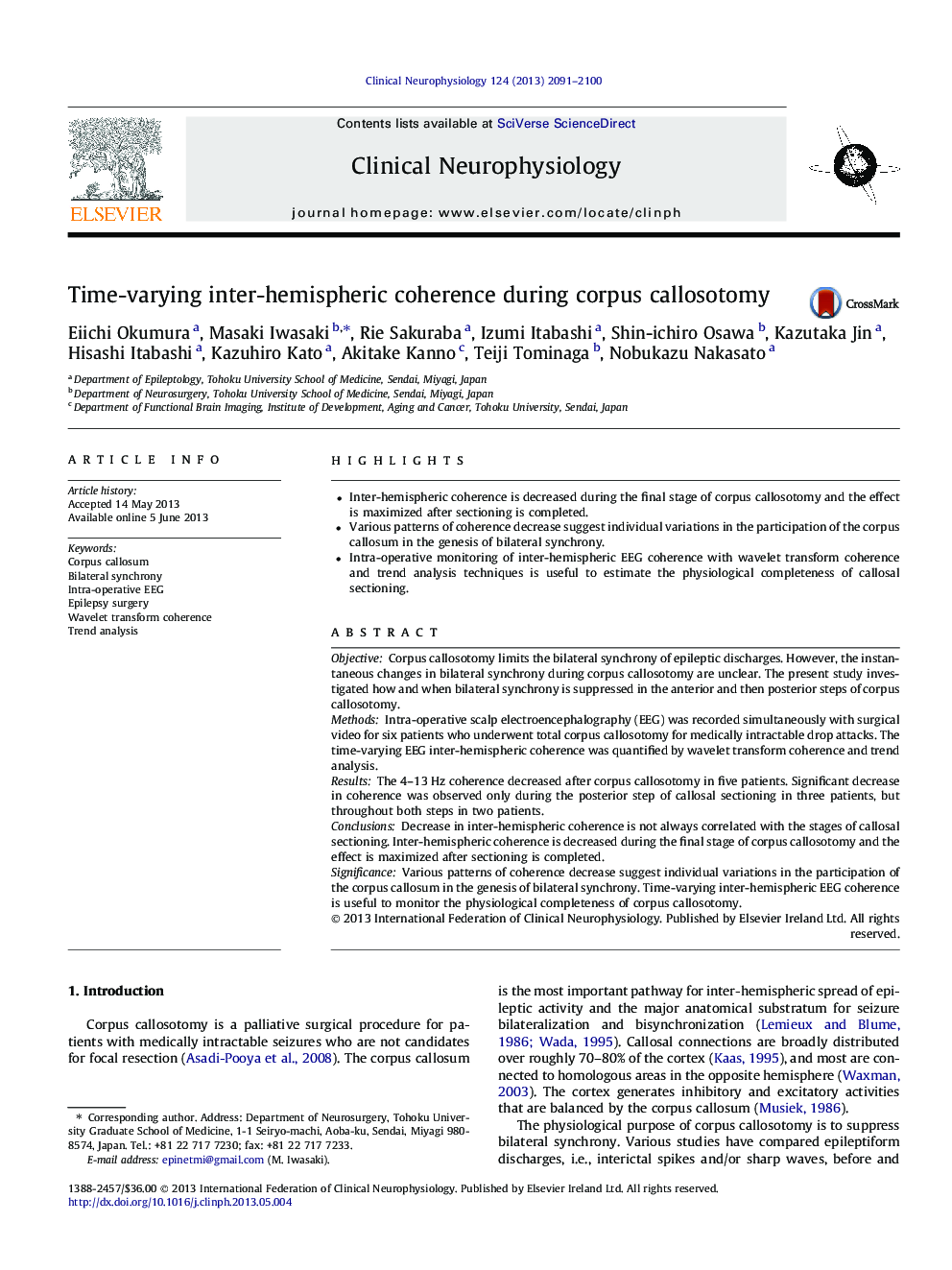| Article ID | Journal | Published Year | Pages | File Type |
|---|---|---|---|---|
| 3043311 | Clinical Neurophysiology | 2013 | 10 Pages |
•Inter-hemispheric coherence is decreased during the final stage of corpus callosotomy and the effect is maximized after sectioning is completed.•Various patterns of coherence decrease suggest individual variations in the participation of the corpus callosum in the genesis of bilateral synchrony.•Intra-operative monitoring of inter-hemispheric EEG coherence with wavelet transform coherence and trend analysis techniques is useful to estimate the physiological completeness of callosal sectioning.
ObjectiveCorpus callosotomy limits the bilateral synchrony of epileptic discharges. However, the instantaneous changes in bilateral synchrony during corpus callosotomy are unclear. The present study investigated how and when bilateral synchrony is suppressed in the anterior and then posterior steps of corpus callosotomy.MethodsIntra-operative scalp electroencephalography (EEG) was recorded simultaneously with surgical video for six patients who underwent total corpus callosotomy for medically intractable drop attacks. The time-varying EEG inter-hemispheric coherence was quantified by wavelet transform coherence and trend analysis.ResultsThe 4–13 Hz coherence decreased after corpus callosotomy in five patients. Significant decrease in coherence was observed only during the posterior step of callosal sectioning in three patients, but throughout both steps in two patients.ConclusionsDecrease in inter-hemispheric coherence is not always correlated with the stages of callosal sectioning. Inter-hemispheric coherence is decreased during the final stage of corpus callosotomy and the effect is maximized after sectioning is completed.SignificanceVarious patterns of coherence decrease suggest individual variations in the participation of the corpus callosum in the genesis of bilateral synchrony. Time-varying inter-hemispheric EEG coherence is useful to monitor the physiological completeness of corpus callosotomy.
